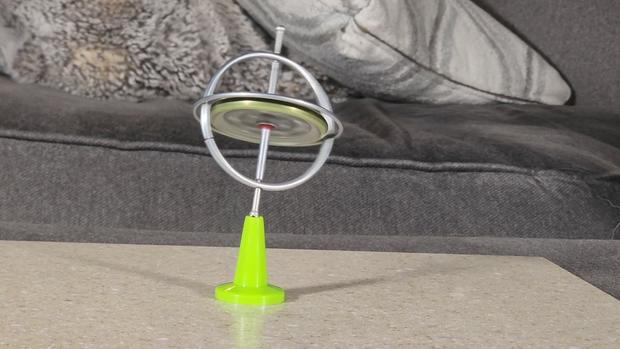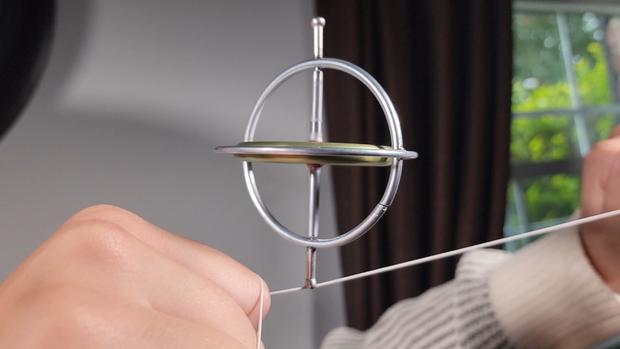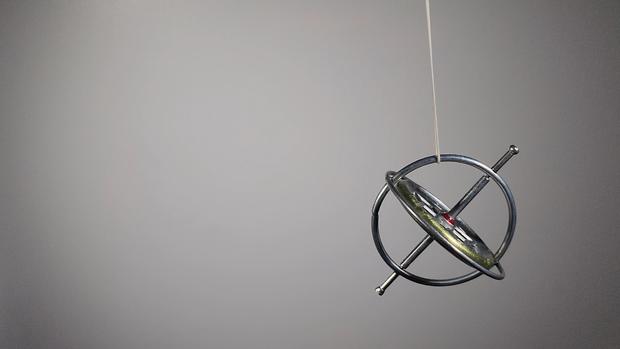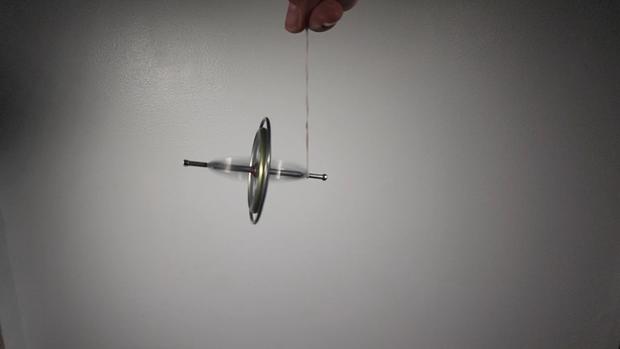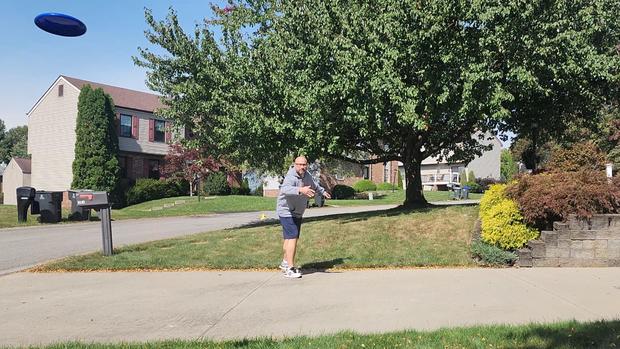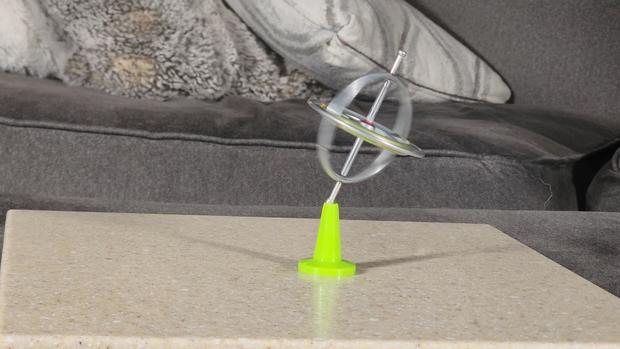Hey Ray: Gyroscopes
PITTSBURGH (KDKA) - Sometimes seemingly simple toys have some pretty cool science packed into them.
You may remember when we showed you all the scientific processes that made the thirsty bird toy continue to drink. I got a simple toy, and I think you are going to like the science that goes into making it work.
This time, we are going to take a look at what makes a toy gyroscope work.
To start the toy gyroscope, you wrap a string around the post that is connected to a disk that can freely spin in the center of the toy. When you pull the string, that disk spins and it is that spinning disk that allows the toy gyroscope to stand.
While it looks like a fancy top, and tops use some of the same principles, gyroscopes are a little different.
That spinning disk in the center of this toy can make it stand, even though the outside is not spinning as fast. The motion of the disk on the inside is actually causing the whole toy to rotate slowly, but the internal disk is spinning at a high rate of speed.
The spinning disk can allow it to stay balanced on a platform and even a thin string. I think the coolest thing is attaching the string to one of the sidebars.
When the disk is not spinning, it will just dangle. However, it holds itself up when the internal disk is spinning!
So, how do all these things happen with this toy? Simply, a gyroscope is a spinning wheel that is set within a movable frame. The spinning wheel is the piece that makes these gyroscopes do their magic. By "magic", I mean physics.
The spinning wheel, like other rotating objects, has what is called conservation of angular momentum. This is a physical property that essentially will prevent any change to its orientation unless it is acted on by an external force...Or outside kitten.
Note: Nimbus made recording this Hey Ray segment very difficult!
Anyhow, if you ever tried to throw a Frisbee like a baseball, you know it does not go so well.
If you throw it properly, the angular momentum from it spinning gives the Frisbee the stability to fly long distances. The same ideas apply to the spinning disk inside the gyroscope. They help stabilize it because the momentum of the spinning disk holds the disk in that orientation.
That results in the gyroscope standing up, or at least trying to.
Electronic versions of gyroscopes are used in orbiting satellites and space telescopes, compasses, camera stabilization and many other things. Sometimes, multiple gyroscopes are used to achieve balance or stabilization.

